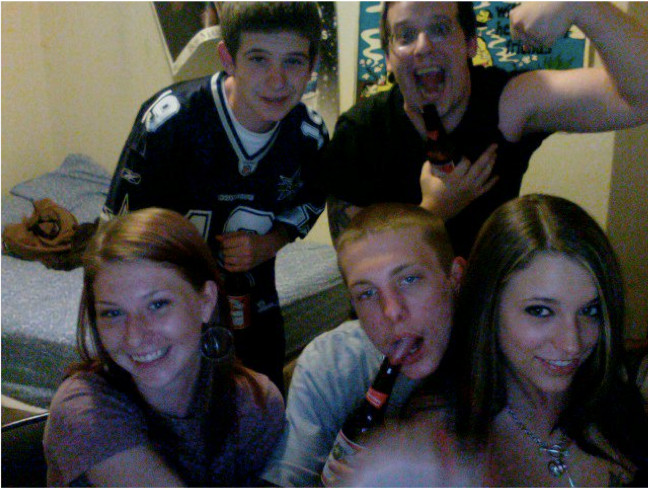Teens are a target market for alcohol ads
Alcohol industry uses Facebook, Twitter and other platforms to engage fans
The Facebook images of teens toting bottles of Jim Beam, Bacardi and Budweiser at parties were alarming.
During his presentation at Long Beach Medical Center's Coalition to Prevent Underage Drinking's annual town hall meeting on July 11 at the Long Beach Public Library, Dr. David Jernigan, the director of the Center on Alcohol Marketing and Youth, said that the marketing of alcohol online is often aimed at teenagers, especially through Facebook, Twitter and other social media.
“Young people who start drinking before the age of 15 are five times more likely to develop alcohol problems later in life,” Jernigan said. “People drink for the marketing.”
Internet alcohol advertising grew 90 percent in just a year, and brands such as Bacardi, Smirnoff and Joose have numerous Facebook pages — many created by fans — where users are encouraged to submit photos and videos with their favorite alcoholic drinks.
“The biggest challenge for us is digital media,” Jernigan said. “This is where the industry is going and where so many of the kids spend so much of their time. Bacardi alone has seven different Facebook pages with over 700,000 fans.”
The average young person who watches television, Jernigan said, sees 366 alcohol ads in a year — one per day — and youth exposure to advertising on television is growing at a faster rate than for adults.
“We now have $1 million for a national media campaign on alcohol,” Jernigan said.Hardly enough, he said, for the center to compete with the roughly $1 trillion that the alcohol industry spends on lobbying and political contributions.
Jernigan also said that he traveled through Long Beach prior to the forum and observed numerous advertisements for alcohol posted in the windows of local businesses. He pointed out images of vodka placed next to bottled water in refrigerators, and toys stacked next to a Bud Light logo in a store window.
School-based intervention programs, designated-driver programs and media campaigns have done little to reduce underage drinking, he said.
“Designated driver [programs] creates a car load of designated drinkers,” he said. “If you’re counting on designated driver to reduce drunk driving, you’re putting your eggs in the wrong basket.”
Jernigan said that curbing underage drinking will take a combination of higher alcohol taxes, advertising restrictions, a ban on sales, minimum age of purchase laws, restrictions on sales, enhanced enforcement and lower BAC limits, among other strategies.
“These are hard to do, but they are the most effective strategies,” he said. “We have to create multi-level, multi component interventions.”

 39.0°,
Fair
39.0°,
Fair 




